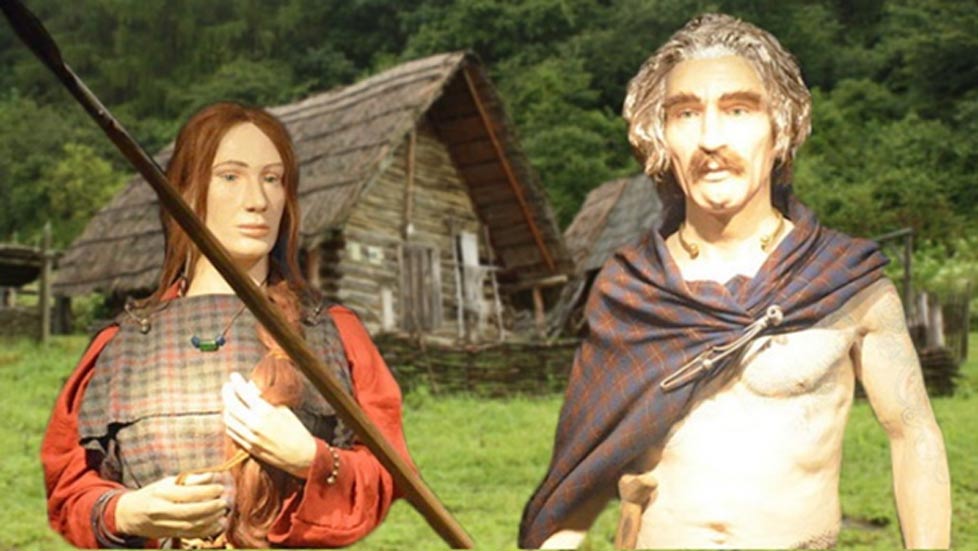
Questions of Identity: Who are the Europeans?
Many of us with European heritage are confused about identity. Regardless of where we now live – Europe, North America, Australia or elsewhere - questions arise such as “where is the homeland, what are our origins and who dispossessed whom”? Are we really even ‘European’?
Europe might have been the part of the world where our grandparents and more distant ancestors once lived, but that does not necessarily mean that those people were indigenous to Europe. In particular, there is a lot of confusion about the identity of Celts. By focusing on the origins of Celts and others, more than 5,000 years ago, using recently published genetic data and other analytical tools, it is possible to discover that there is more to history of the Welsh, Scots and Irish – the people usually referred to as ‘Celts’ - than many realize.
The very word ‘Celt’ arouses romantic notions of a proud people, associated with Druids. We tend to think of them as a sensitive spiritual people, in touch with Earth, who were brutally crushed by Romans. Much of what we know about Celts, however, is through the Romans. We experience the Celts through Roman eyes as wild and uncivilized, living in mud huts; in contrast with the Romans who built cities and beautiful villas. No wonder that we think of Romans as more ‘civilized’ and the Celts as backward and primitive.
The Ambitious Romans and What Might Have Been
We also have strong feelings about Romans. With their symbol of the eagle, we are aware of their ruthless drive to achieve goals. There is without doubt a dark side to Roman influence; one that some of us are not aware of. It concerns their role in our descent into ignorance and the Dark Ages. It was, after all, thanks to the Roman empire morphing into the Catholic Church that we lost much knowledge about our ancient origins, and religion became a form of empty mind control.
Had the Romans been less successful, and the Celts victorious against them, we might have inherited a different approach to religion. There is no doubt that, even today, the Celtic Church is subtly different from the Roman Catholic Church. These differences of religion are not enough, however, paint a clear picture of the Celts. A Celt is clearly more than a non-Roman.
There are three key criteria: language, customs and genes for identifying a ‘people’. Even if they didn’t have a written script, Celts had a distinct Celtic language; as well as identifiably Celtic customs. Data on genetic material, however, supports a shocking fact: Celts and Romans were related.
Celts and Romans share the same common ancestry and the same original homeland. Their languages have the same roots as well as shared genetic material. Admittedly the link is pre-historic but it nonetheless explains certain aspects of both Celts and Romans. They are both Indo-European tribes and were once part of this collection of people:
Albanian, Anatolian, Armenian, Baltic, Celtic, Germanic, Greek, Indo-Iranian, Italic, Paleo-Balkan, Slavic, Tocharian - not Hungarian, or Basque, or Egyptian.
The connection between these languages was discovered in the 19th century when it was realized that Indian Sanskrit, even though written in a different alphabet, had the same roots as European languages. Given their common roots, it follows that these tribes must have all once lived together. Otherwise one has the image of ancient Celts travelling thousands of miles to let the Indians know that the latest word for ‘x’ is now ‘y’. Much research has gone into studying the close parallels between Celts, Hindus and the Sanskrit Vedas in terms of not just language but law, mythology and religion.
Hungarians, although physically quite close to these early Europeans, came from a different linguistic and tribal background, as indeed did the Basques. Both have remained as linguistic islands, helping to prove that the links between the European languages are more than just coincidence. Egyptians did not necessarily have any connection at all.
Indo-European society, at the time they last lived together, could be characterized as follows:
- fortified settlements with mud huts
- patriarchal – no gender equality
- segregated warrior castes
- a continual emphasis on warfare – as demonstrated by the much later interest in improved weaponry when iron weapons became available after 1200 BC
- a way of thinking that could be summarized as ‘expediency’, meaning that whatever means were used were justified in order to achieve an objective.
In terms of social structures, the most obvious warrior castes being the Indian trivarna (three-caste) society - Brahmanas (priests), Ksattriyas (soldiers) and Vaeshyas (merchants) - in which warriors and warfare were a significant part of Vedic society. Romans were similar, being largely a male warrior sodality that arrived on the Tiber around 700 BC. Indians and Romans were also not alone in their attitude to women. The Indian Vedas are especially dismissive of women who are not encouraged to recite the Vedas. The story of the Rape of the Sabine women was possibly more than a myth and based on reality.
Linguistic analysis going back 5,000 years further emphasizes the patriarchal nature of Indo-European society. The proto-Indo-European word for ‘wedding’, for example, means ‘to lead home’ – leading a wife to the home of the husband. They had a term for ‘widow’ but not necessarily for ‘widower’.
Genetic Lines and Ancestral Haplogroups
This brief comparative analysis of beliefs, language and customs can be backed up with genetic research. All of the Indo-Europeans belong to the same haplogroup R1b. The genetic family tree of the male lines of the Y-chromosome are unbroken going back into Neolithic times. (See: Eupedia.com)
When history becomes aware of Celts, Greeks, and Romans is during the Iron Age from 1200 BC onward. But when they last lived together was in the Bronze Age, over 5,000 years ago – and where we lived was neither in India nor in Europe but here in the Ukraine— something which I have worked out using etymology and other factors which are all in my book “Approaching Chaos-Could an Ancient-Archetype Save C21st Civilization?”.
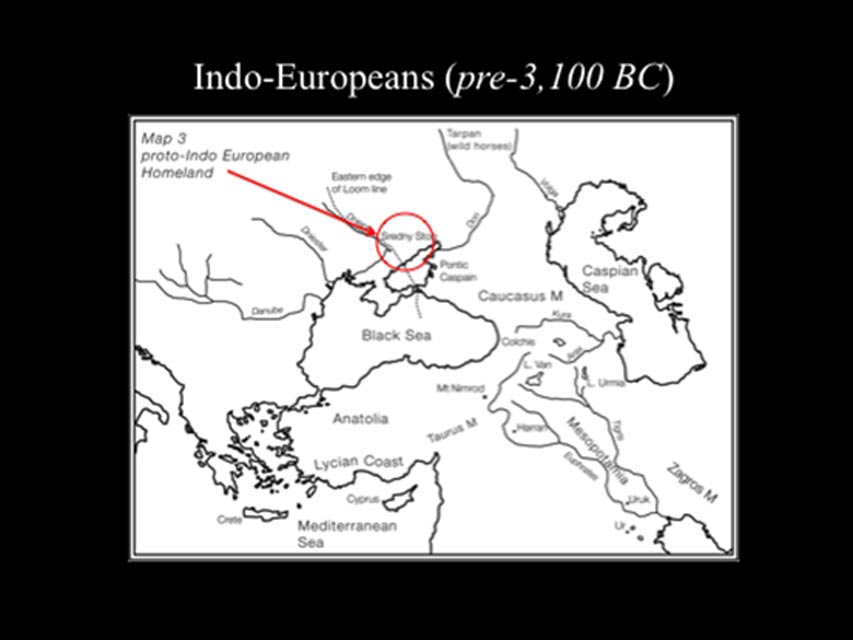
My findings have now been confirmed by a genetics expert Dr. Spencer Wells who published his data in 2004 and runs the Genographic Project funded by the National Geographic magazine; as well as charts of the R1b haplogroup placing this mutation of R1b1a in the Pontic Steppes.
And if that doesn’t feel right to you – and you feel that your roots are in Europe and not in the Ukraine, what you are probably resonating with is this map:
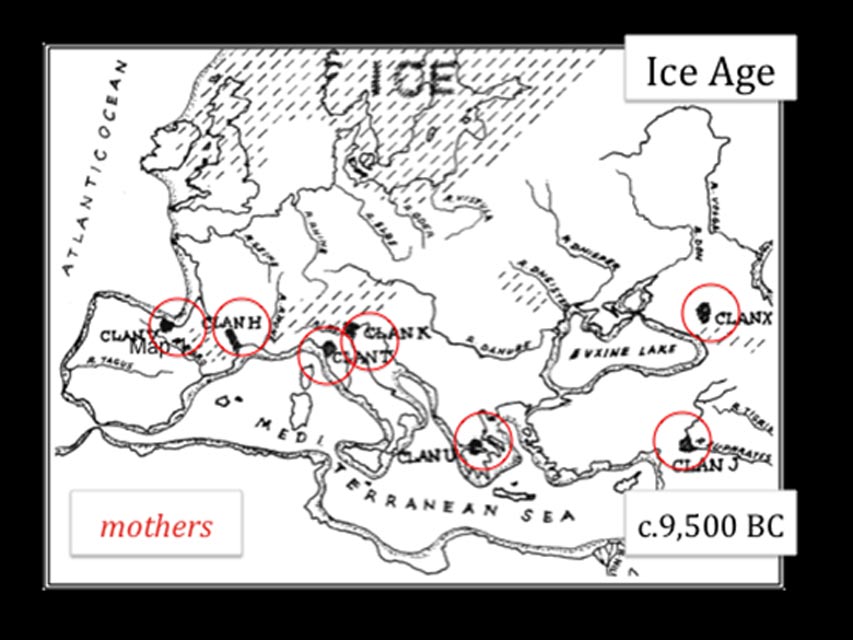
This is an Ice Age Map created by Prof Brian Sykes, an Oxford geneticist. The rings relate to the places that he has worked out for the unbroken mitchrondial DNA on the maternal side going back as far as 45,000 years.
Prof Sykes’ research reveals that most Europeans are descended from just seven unbroken lines of mitochondrial DNA, and can trace their common maternal ancestor back to between 15,000 and 20,000 years ago. One, clan U, goes back to the first appearance of Cro-Magnon 45,000 years ago. Your mothers’ line is probably in Europe; already here in the Ice Age.
So, how did your maternal and paternal ancestors meet, if your mother’s line was in Europe and your father’s north of the Black Sea?
Mysterious Meetings and Movements
What eventually brought them together was the aftermath of a massive global catastrophe around 3100 BC, at the end of the fourth millennium BC. The date of this catastrophe is within about 40 years of the start of the last Mayan calendar long count, the one that ended in December 2012.
No one knows quite what happened. It could have been a comet that rocked the Earth. It could have been the time of the great Flood. But what it meant was the end of the Holocene Climate Optimum which had consisted of warmer summer temperatures in the Northern Hemisphere and cooler summers in the tropics. There had been extensive forests and high rainfall in areas that went on to become desert such as the Gobi and Thar. The Sahara had been a green savannah with giraffes and other wildlife roaming, and then it became desert.
The impact on people was that everyone went on the move in search of safer homelands. It is at this point that Indo-Europeans split up. The Celts went the furthest East and West. They ended up not only in Ireland but also in China, in the Tarim basin where they became Tocharians (it sounds like a joke but 4,000-year-old, six-foot [two meter] tall, ginger haired mummies wearing tartan really have been found in the Chinese Taklamakhan desert). Toponyms – place names – give an indication of the routes taken by the Celts, such as the main rivers north of the Black Sea which have a Celtic derivation from Danu (eg Danube).
The Romans, along with the Greeks, came down through the Caucasus and into Turkey. Some Indo-Europeans went to Iran and became Persians. Others carried on through Iran, eventually ending up in northeast India.
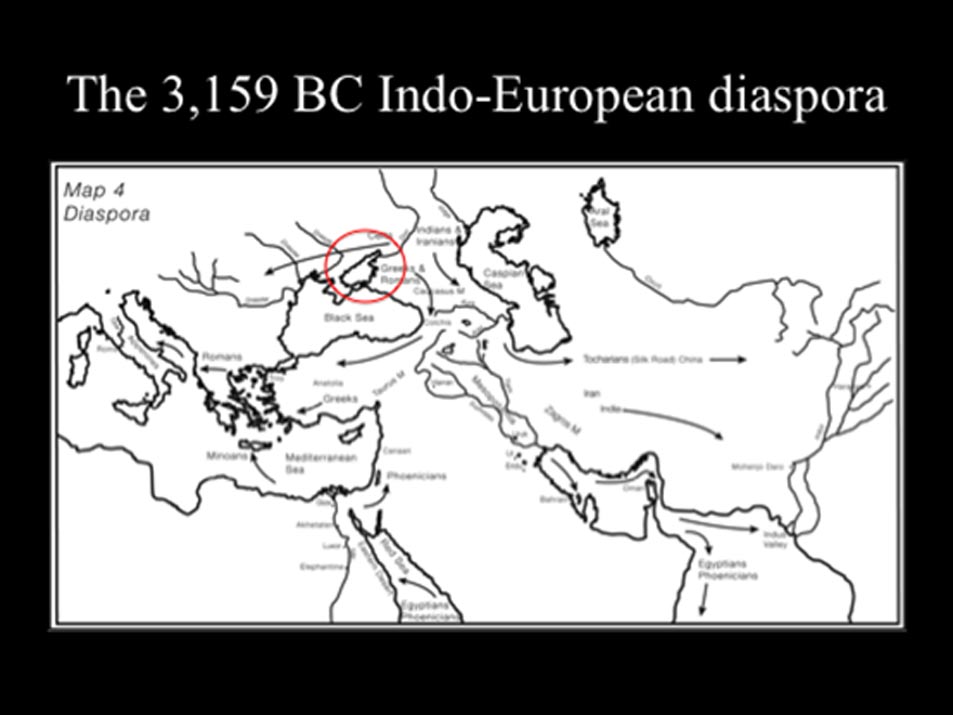
It is around the time of this cataclysm that some of the building of stone circles, especially in Britain, occurred; from about 3000 BC. Stonehenge may even have direct links to the catastrophe as it dates back to at least 2600 BC in its stone form and earlier with wooden post holes. It is possible that it was created partly to help re-calibrate calendars after the catastrophe.
Who built Stonehenge is not entirely clear. It is highly unlikely that they were Celts. The consensus seems to be that the builders were the Beaker Culture who originated in Spain. They were makers of beautiful pots, after which their culture is named, and with which they often buried their dead in round barrows. They brought metal working, including bronze, and the drinking of mead with them to Britain. And were possibly responsible for the many stone circles and megalithic sites in the UK.
By 2600 BC, the time of Stonehenge, Celts and their relations had barely reached central Europe (Hungary, Austria, Bohemia) from the East.
The Celtic Unetice culture was mostly in central and Eastern Europe (central Germany, Czech Republic, Poland). The earliest that some L21 Celtic lineages might have reached Britain was 2100 BC.
The Celtic Presence
From 1800 BC onward, Celts had become a presence in the Iberian peninsular. They were then found all over western, northern and central Europe. They went from the Netherlands and northern Germany and entered Scandinavia from 1700 BC. The stronger presence of L21 in Norway and Iceland is attributable to the Norwegian Vikings who colonized parts of Scotland and Ireland and took slaves back to their colony of Iceland and Norway. It is this branch of Celts who are linked to the Q-Celtic languages (Goidelic and Hispano-celtic) which went on to become Gaelic as spoken in Scotland and Ireland.
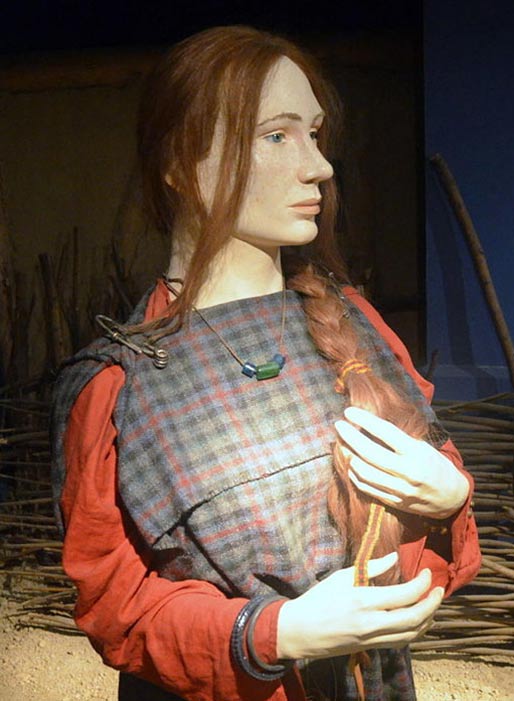
Recreation of a Celtic woman of the Przeworsk culture (3rd century BC, La Tène period), Archaeological Museum of Kraków. (CC BY-SA 3.0)
But, for at least a thousand years, the main presence of Celts remained in central Europe. Starting from 1300 BC, a new Bronze Age culture flourished around the Alps, becoming the classic Celtic Urnfield culture which evolved in to the Hallstatt culture of 1200 BC. It is this group which is associated with the P-Celtic dialect which shifted the Celtic sound for Q to P and became known as Brythonic Celts – as spoken by Welsh and Cornish.
By 1200 BC Romans had possibly only reached eastern Turkey and Troy, and from there went to Italy, reaching the west coast around 700 BC. It was here on the river Tiber that the Latin speaking Indo-Europeans infiltrated the existing Etruscan culture; learned to live in a city, and became ‘Romans’.
Who the Etruscans were and how they came to be in Italy is another story. They were not Indo-Europeans but part of a much more ancient and sophisticated group of people, the earliest city people, possibly related to the Phoenicians. They effectively taught the Romans how to be ‘civilized’ and were then ousted as the Romans grew in power.
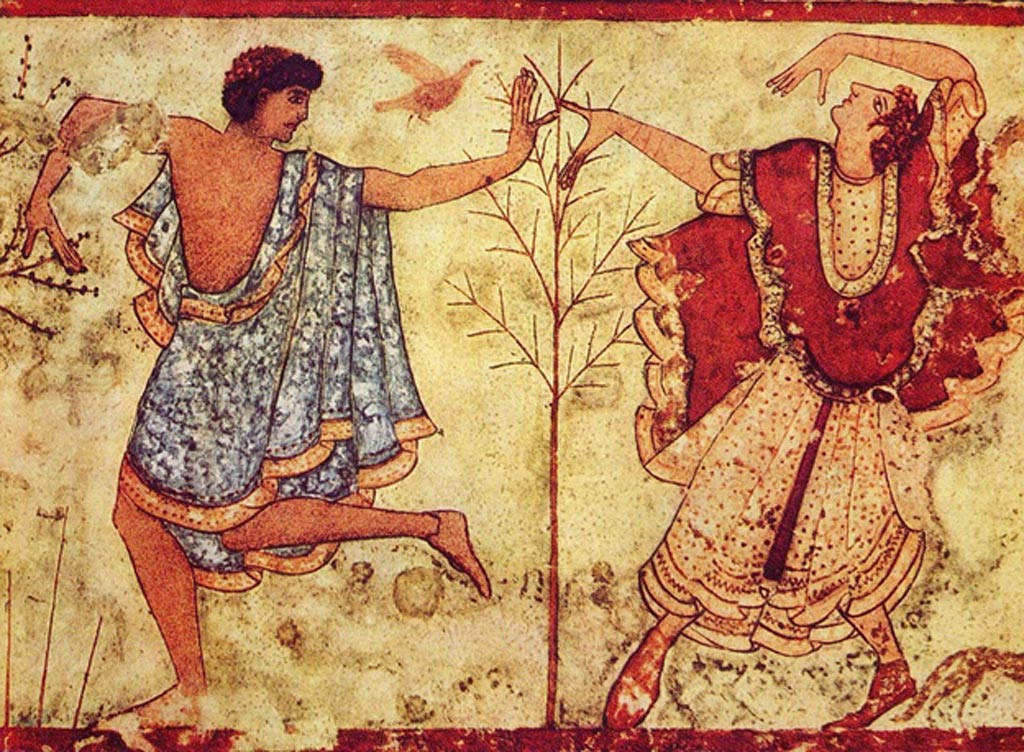
Etruscan dancers in the Tomb of the Triclinium near Tarquinia, Italy (470 BC). (Public Domain)
By the time that the Romans became interested in the Celts in England in the first century AD, the Etruscans had more or less disappeared.
Among the earliest campaigns the Romans fought in Britain, in 61 AD, was against Celts and Druids on the Druidic stronghold of Mona on Anglesey in North Wales. There is a view that the Romans’ decision to invade England was because of the Celts’ link to the Druids. By this time, the Celts had only been a noticeable presence in the UK of no more than a few hundred years. Quite what the relationship was between Celts and Druids is not entirely clear to me. Were the Druids already in Britain when Stonehenge was being built? I don’t know the answer to that.
Roman writer Pliny in the first century AD “presents the Druids as doctors and magicians, or a combination of the two, dealers in unnatural natural science; he emphasizes their medical and magical practices, and their possession of magical recipes.”
Whether or not it was the influence of the druids, or something else, the Celts were unusual as Indo-Europeans. They were without doubt great warriors. The Greco-Roman statue of the dying Celt in the Capitoline museum in Rome is a moving tribute to their courage.
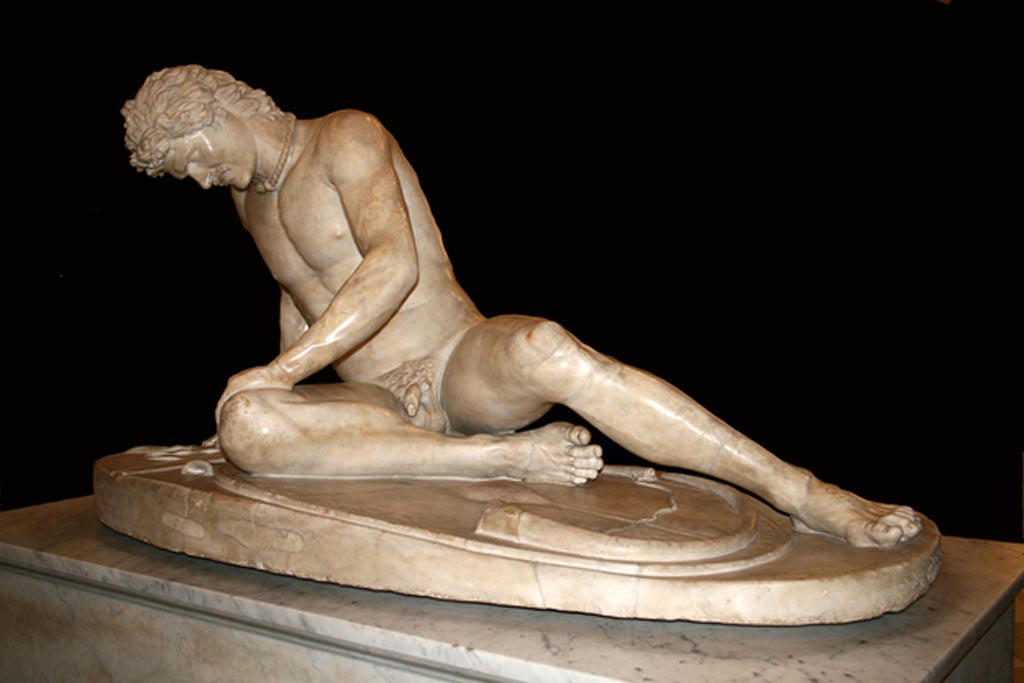
“The Dying Gaul in the Capitoline museum in Rome is an ancient Roman marble copy of a lost Hellenistic bronze sculpture which was commissioned sometime between 230 BC and 220 BC by Attalus I of Pergamon to celebrate his victory over the Celtic Galatians in Anatolia.” (Jean-Pol GRANDMONT/CC BY-SA 3.0)
They preferred to fight naked, wearing only a gold torque around their necks. They were always at war with the Romans and there was a notable victory for the Celts when they sacked Rome in 387 BC. Ultimately, the Romans were just more successful militarily.
What also set the Celts apart was their powerful belief in the importance of the law and that the good of the community was the basis of law. Fundamental to their approach to community was caring for the old, the poor, and the sick. And even more striking is that, in spite of being so warlike, the Celts also believed in gender equality. Women could own property and hold office, even become queen like Boudicca. They were the least patriarchal of all the Indo-European tribes, and elected their officers and chieftains. Maybe it was these more ‘civilized’ aspects of the Celts that have given us our ‘romantic’ view of them. But that doesn’t make us any less confused.
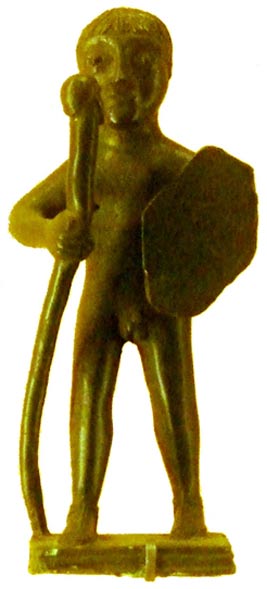
A Gallic statue of a Celtic warrior, in the Museum of Brittany. (Public Domain)
The Indo-Europeans just kept coming west, and pretty much wiping out what had gone before. Not only did Indo-European languages come to dominate (and still do with the exception of Hungarian and Basque), but so did their simpler and less decorated style of pottery than earlier Beaker people; their more ‘advanced’ agricultural production methods, including the drinking of cow’s milk; their use of the horse; their weaponry (bronze and later, iron); their cultic practices which replaced a more ancient attachment to female figurines and fertility symbols with sculptures of domesticated animals. They were able to do this because, being aggressive male warriors with better weapons, they could defeat and dominate local populations, killing off indigenous males and breeding with their females. This is the modern day map of distribution of the y-chromosome:
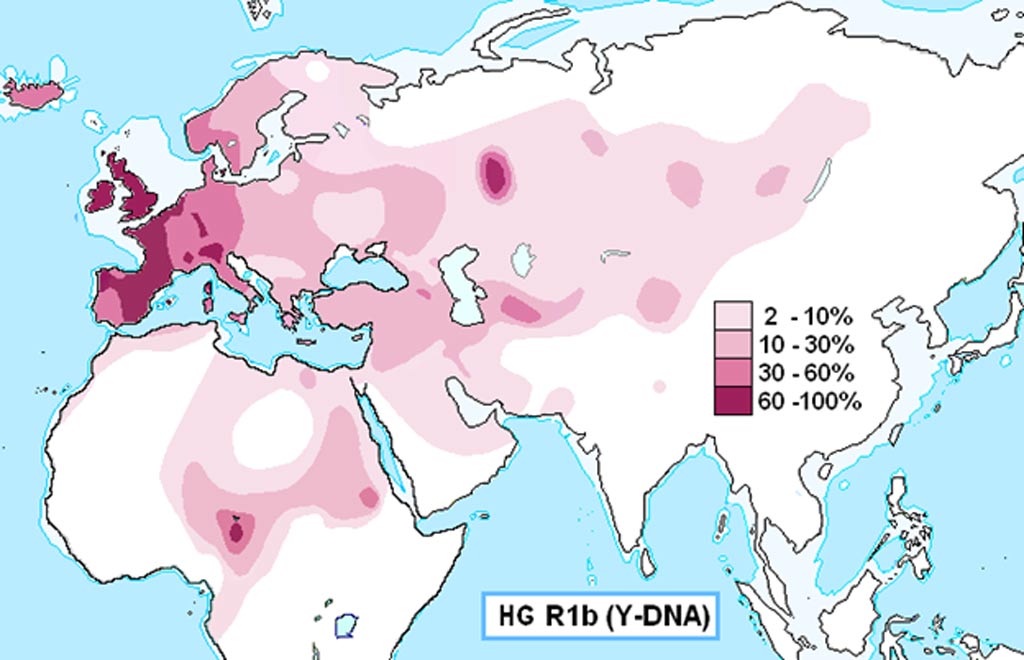
Modern distribution of Haplogroup R1b. (CC BY-SA 3.0)
A Different Perspective
So, before we get too romantically attached to Celts, spare a thought for our mothers’ lines. And think how differently it might have been had they not encountered your fathers… Yes, we might still be living in mud huts, perhaps in a closer, more spiritual connection to nature. But we might also have missed out on the positive benefits of the Bronze Age. And now is the time to reassess that and not see it through Indo-European eyes – not be stuck in a cultural and identity paradigm.
In particular, we now need to learn how to incorporate the magic and mystery of the great Bronze Age civilizations – Egyptian and others – into our modern lives. I have left out an important piece of the jigsaw. It is not quite true that the Egyptians had no connection with the Indo-Europeans. In 2009 a Swiss DNA profiling company, iGENEA, established that King Tut had an ancient ancestor who came from the same haplogroup R1b1a2 as other Indo-Europeans living in the Pontic Caspian. I have good reason to believe that Tutankhamun’s ancestors travelled to the Ukraine sometime between 4000 and 3100 BC and had contact with our ancestors which left a profound impact on us in ways that we are no longer aware of now. But that is a story for another time…
Featured image: Deriv; Reconstructed shape of a farmstead from the Upper Iron Age (300-100 B.C.) (CC BY-SA 3.0) and diorama featuring two Celtic tribespeople. (CC BY-SA 3.0)
Images not otherwise noted are with permission courtesy the author, Lucy Wyatt.
References
“In Search of the Indo-Europeans”, JP Mallory, London, 1991, Published by Thames & Hudson.
“Approaching Chaos-Could an Ancient-Archetype Save C21st Civilization?” Lucy Wyatt, 2010, Published by Earth Books.
“The Druids”, Nora K. Chadwick, Cardiff, 1997, Published by University of Wales Press; Revised edition edition.
“Distribution maps of Y-chromosomal haplogroups in Europe, the Middle East and North Africa”. Eupedia.com. 2015. [Online] Available at: http://www.eupedia.com/europe/Haplogroup_R1b_Y-DNA.shtml